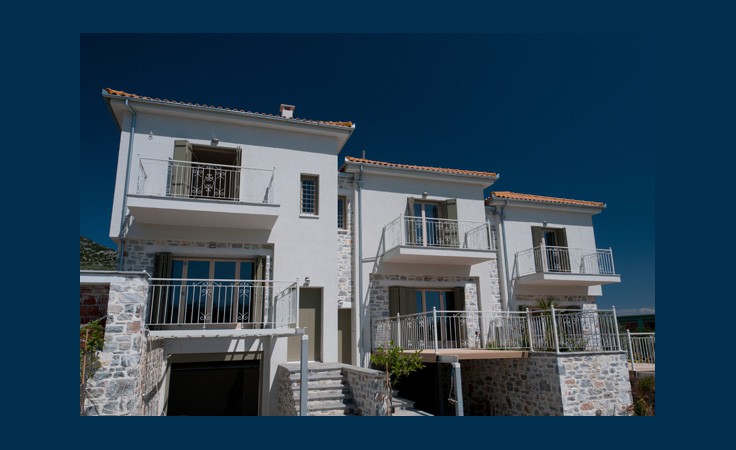First Passive House projects in Greece and Turkey now certified
With intelligent architecture, considerable energy savings are possible in every climate. The latest examples of this now stand in Greece and Turkey.
A complex of terraced houses and an environmental education centre are the first buildings to fulfil the criteria of the Passive House Standard in these two Mediterranean countries. The specific challenges for energy efficient construction in regions with a warm climate will be presented based on these and other projects at the International Passive House Conference 2016 in Darmstadt this April.
The international Passive House Standard is achieved through a good level of thermal insulation, climatically optimised Passive House windows, an airtight building envelope, an appropriate ventilation system, and thermal bridge free design. A strategy against overheating in summer is also essential, particularly in countries with a warm climate.
As for the Human Resources Centre in the Turkish city of Gaziantep, light-coloured walls and green roofs offer protection against too much sun. Depending on the time of year, the supply air of the ventilation system is preheated or precooled with the aid of a ground heat exchanger. The energy demand of the building is largely covered by a photovoltaic system in the garden. The Passive House building has a total area of just under 310 square metres and includes a small auditorium as well as other rooms for educational purposes. Development of the building took place in cooperation between local architects and partners in Germany.
The first Passive House project in Greece is located at the edge of the coastal port city of Volos. The three terraced houses built by the local engineering firm X-G lab+development have a total area of 477 square metres. As calculated with the design tool PHPP, the heating demand is 12 kWh/(m²a) and the cooling demand is 6 kWh/(m²a). Quality assurance was performed by the Hellenic Passive House Institute, the national affiliate of the International Passive House Association (iPHA). The fact that the Passive House concept provides good results in the Mediterranean climate even for retrofits, has meanwhile been demonstrated in the suburbs of Athens: in Papagou, a residential and commercial building was the first in the country to meet the criteria for the EnerPHit Standard for retrofits with Passive House components.
Solutions for energy efficient construction in warm climate zones will be one of the focal points at the 20th International Passive House Conference, taking place on 22 and 23 April 2016 in Darmstadt. In addition to the examples in Greece and Turkey, a series of other projects will also be presented in a special lecture session, including the world’s first public library in Passive House Standard which is located in Villamediana de Iregua, Spain.
Essential basic principles for the construction of Passive Houses in the Mediterranean climate were researched at the Passive House Institute in Germany and published in 2009 in a study by Dr. Jürgen Schnieders. In the following years, these findings were put into practice with numerous buildings – not only in the Mediterranean region but also for instance in the south of Australia and in California, where similar climatic conditions prevail. A detailed description of the requirements to be met in this regard are also provided on the internet platform Passipedia.
A selection of photos for editorial use: www.flickr.com/photos/passive-house-institute <http://www.flickr.com/photos/passive-house-institute>
Regular Passive House related news updates: www.twitter.com/the_iPHA <http://www.twitter.com/the_iPHA>
Press Release as pdf: http://www.passivehouse-international.org/upload/2016_02_11_Passive-House-in-warm-climates_Press-Release.pdf
Information on International Passive House Conference 2016: www.passivehouse-conference.org <http://www.passivehouse-conference.org>

